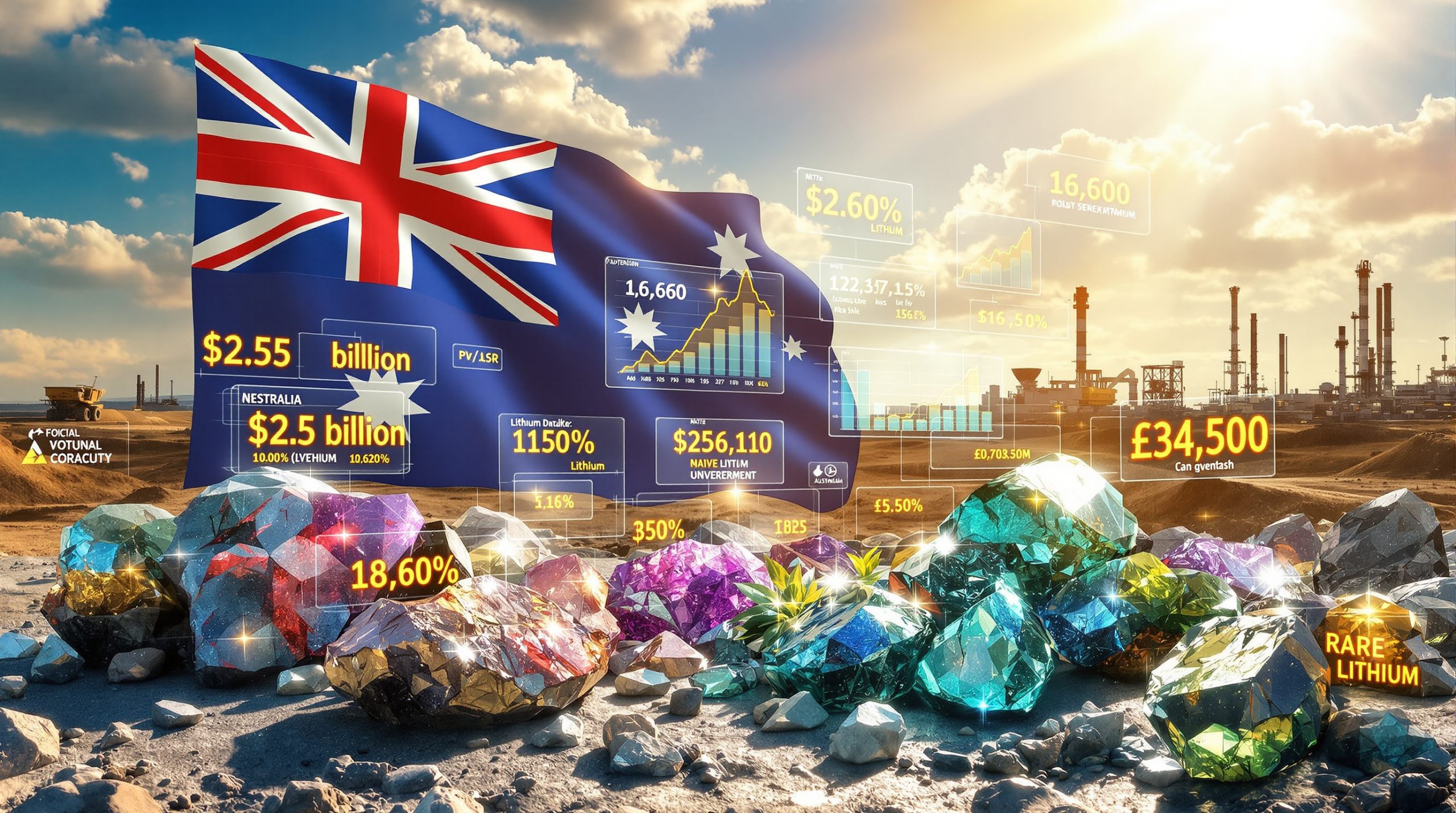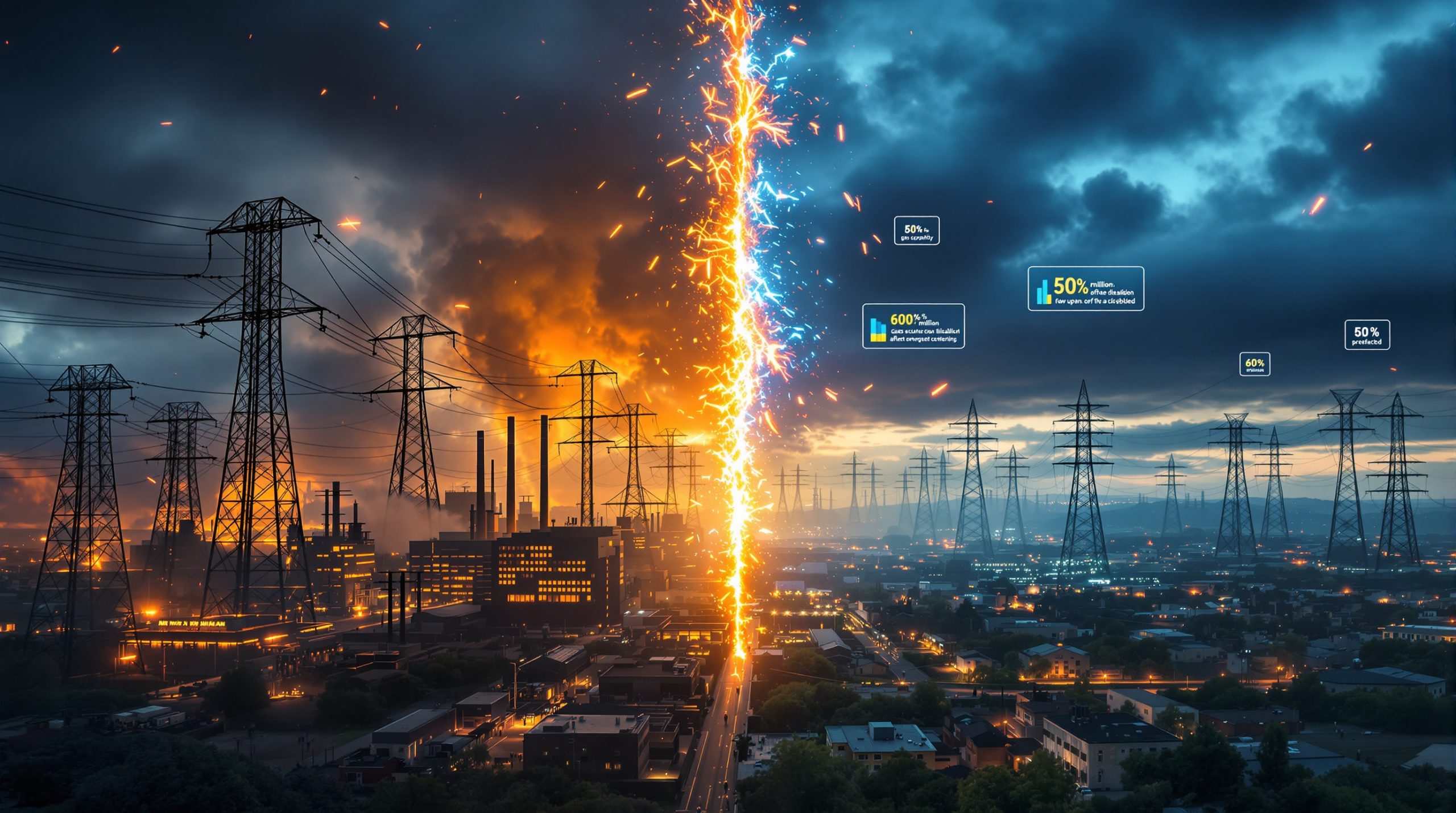What Are Strategic Metals and Why Do They Matter?
Strategic metals are mineral resources considered essential for national security, economic prosperity, and technological advancement. These include rare earth elements, lithium, copper, and other critical minerals that form the backbone of modern manufacturing, defense systems, and renewable energy technologies.
The United States faces significant supply chain vulnerabilities with approximately 80% of its rare earth elements imported primarily from China, according to USGS mineral commodity summaries. This dependency extends to other critical minerals energy with China controlling roughly 50% of global lithium supply and the Democratic Republic of Congo dominating cobalt production.
The Growing Importance of Supply Chain Security
The global competition for strategic metals and US supply chain has intensified as nations recognize their vulnerability to supply disruptions. With China controlling significant portions of processing capacity for many critical minerals, countries like the United States are taking unprecedented steps to secure domestic supply chains and reduce dependency on foreign sources.
As Murray Dawes of Fat Tail Investment Research notes, "Strategic metals represent what the US is actually starting to do to try to protect their supply chain," highlighting the shift from market-based approaches to national security-focused policies.
Key Strategic Metals Under the Spotlight
-
Rare Earth Elements (REEs): Essential for magnets in electric vehicles, wind turbines, and defense applications. The unique magnetic properties of elements like neodymium and dysprosium enable miniaturization in guided missile systems and other advanced defense technologies.
-
Lithium: Critical for battery technology and energy storage. Beyond electric vehicles, lithium plays a crucial role in medical device batteries and grid-scale energy storage systems.
-
Copper: Fundamental for electrical infrastructure and renewable energy systems. A single wind turbine can contain up to 4 tons of copper, while the average electric vehicle requires 2-3 times more copper than conventional vehicles.
-
Tin: Important for electronics manufacturing and soldering. The semiconductor industry depends heavily on high-purity tin for creating reliable electrical connections.
Did you know? The metallurgical processes required to refine rare earth elements to high purity are extraordinarily complex, involving hundreds of separation steps—a key reason why China has dominated this market for decades.
How Is the US Government Securing Strategic Metal Supply Chains?
Direct Investment in Domestic Production
The US government has taken bold steps to secure strategic metals and US supply chain through direct investment in domestic production. In a landmark move, the government invested $400 million in MP Materials, becoming the largest shareholder in this major US-based rare earths company. This investment triggered a 50% surge in MP Materials' stock price and a 17% increase for Lynas Corporation, another significant non-Chinese rare earths supplier.
This marks a fundamental shift in US industrial policy, moving from market-based approaches to direct state intervention in critical industries. The investment falls under authorities granted in the Defense Production Act, which was expanded specifically to address critical minerals policy vulnerabilities.
Tariff Policies and Market Protection
The administration has announced plans to implement a 50% tariff on copper imports starting August 1st. This aggressive policy aims to:
- Stimulate domestic copper production
- Reduce dependency on foreign suppliers
- Protect strategic industries despite potential inflation risks
According to Congressional Research Service analysis, these tariffs could raise U.S. manufacturing costs by 10-15%, a price the administration appears willing to pay for supply chain security.
Creating a Strategic Buffer Against Supply Disruptions
These government interventions represent a fundamental shift in US industrial policy, prioritizing supply chain security over short-term economic considerations. As Murray Dawes observed, "The US government is willing to withstand inflation to protect their supply chain," demonstrating the critical importance placed on maintaining access to these strategic resources.
Expert Insight: "This intervention signals that critical minerals have transcended economic policy and become central to national security planning. The willingness to accept higher domestic prices represents a sea change in governmental approach." – Murray Dawes, Fat Tail Investment Research
What's Happening in the Lithium Market?
Signs of Recovery After Prolonged Downturn
The lithium market insights are showing early signs of recovery after experiencing a severe downturn. Recent market movements include:
- Liontown Resources: Up 13% in a single week
- Mineral Resources: Up 8% in the same period
- Pilbara Minerals (PLS): Up 5% during this timeframe
These gains come after a prolonged bear market that saw many lithium stocks lose 70-80% of their value from peak to trough. Industry analysts attribute the recovery to a combination of production discipline, growing EV sales in Europe, and early signs of price stabilization in China.
Current Price Challenges and Recovery Thresholds
Despite these positive movements, the lithium market still faces significant challenges:
| Lithium Market Metrics | Current Status | Recovery Threshold |
|---|---|---|
| Current Price (China) | $660/tonne | $800/tonne |
| Price Increase (Recent) | 10% (from $600) | Needs additional 21% |
| Production Profitability | Most producers unprofitable | Requires $800+ for sustainability |
| Mine Closures Risk | Significant | Decreasing if price trend continues |
| Global Capacity Utilization | 65% | 80%+ needed for healthy market |
According to Benchmark Mineral Intelligence data, hard-rock lithium operations (predominant in Australia) have higher breakeven costs than brine operations (common in South America), creating a tiered vulnerability within the industry.
Long-Term Growth Drivers Remain Intact
Despite short-term challenges, the fundamental drivers for lithium demand remain strong:
- Electric vehicle market expansion
- Energy storage system growth
- Robotics and automation advancement (with industrial robots requiring specialized lithium-based power systems)
- Global transition to renewable energy
The International Energy Agency projects lithium demand to grow 40-fold by 2040 in scenarios aligned with climate goals, far outstripping current production capacity.
Potential Market Manipulation Concerns
Industry observers suggest China may be deliberately suppressing lithium prices to discourage Western competition and maintain market dominance. Murray Dawes notes, "China is deliberately keeping lithium prices down to scare off Western competition," a strategy that could be creating artificial market conditions that mask the true supply-demand dynamics.
This potential manipulation adds another layer of complexity for investors trying to gauge the true state of the lithium market.
How Is the Copper Market Responding to Tariff Announcements?
Price Distortions and Front-Running
The announcement of potential 50% tariffs on copper imports has created significant market distortions:
- US copper futures prices have surged to all-time highs
- Buyers are front-running tariffs by stockpiling inventory
- A disconnect has emerged between US and London Metal Exchange (LME) prices
This phenomenon represents a classic case of policy-induced market distortion, with buyers rushing to secure supplies before tariffs take effect. According to Murray Dawes, "Copper's price surge may reflect artificial demand, not fundamentals," suggesting the current rally may not be sustainable.
Potential Post-Tariff Market Scenarios
The current price surge may not reflect genuine strength in copper price insights, but rather artificial demand created by tariff front-running. This could lead to:
- Price collapse after August 1st: As pre-tariff demand dries up
- Demand destruction: As higher prices force manufacturers to seek alternatives
- Market rebalancing period: Before finding a sustainable equilibrium
Historical precedents suggest similar patterns occurred following the implementation of aluminum tariffs in 2018, when prices initially spiked before falling dramatically once tariffs took effect.
Long-Term Copper Outlook Remains Strong
Despite potential short-term volatility, the long-term outlook for copper remains robust:
- Industry projections suggest the need for a new Escondida-sized mine (world's largest) every year until 2030 to meet demand
- Electrification trends continue to drive copper consumption
- Green energy transition requires substantial copper inputs
Technical insight: The world will need to develop the equivalent of 35 new Escondida-sized mines by 2030 to meet projected copper demand. For context, Escondida produces approximately 1.2 million tonnes of copper annually, representing about 5% of global production.
What's Driving the Rare Earths Renaissance?
US Government Strategic Investments
The US government's $400 million investment in MP Materials signals a major commitment to developing domestic rare earth capabilities. This move has:
- Catapulted MP Materials' stock price
- Created positive sentiment across the rare earths sector
- Demonstrated concrete government action to secure supply chains
This investment comes after years of growing concern about China's dominance in rare earths processing. China currently controls approximately 85% of global rare earth processing capacity, despite having only about 36% of global reserves, according to USGS data.
Lynas Corporation's Market Position
Lynas Corporation, as the largest non-Chinese rare earths producer, has benefited significantly from these developments:
- Stock price up 17% following the MP Materials news
- Strong uptrend established on monthly charts
- Positioned as a strategic asset in Western supply chains
Lynas operates the Mt. Weld mine in Australia and a processing facility in Malaysia, giving it unique end-to-end capabilities outside of China. The company has also received funding from the US Department of Defense to build processing facilities on American soil.
Disconnect Between Current Prices and Strategic Value
Interestingly, rare earth prices themselves remain relatively weak despite the stock price movements. This highlights the market's focus on strategic positioning rather than current commodity fundamentals.
The disconnect underscores a critical point for investors: in strategic metals, geopolitical considerations and supply chain security can outweigh short-term price movements in determining company valuations.
How Should Investors Approach Strategic Metals Opportunities?
Identifying Potential Value in Distressed Assets
The severe downturn in lithium stocks has created potential opportunities in companies that have:
- Completed mine development during the boom period
- Suffered price crashes just as production began
- Maintained operational capabilities despite market challenges
- Positioned themselves to survive until market conditions improve
Murray Dawes emphasizes that this represents a classic mining cycle pattern where late entrants who completed development just as prices crashed may now represent value opportunities if they can weather the downturn.
Technical Analysis Perspectives on Key Lithium Stocks
Liontown Resources (LTR)
- Experienced a significant decline from peak to trough
- Currently showing signs of basing in a key support zone
- Recent 13% weekly gain suggests potential trend reversal
- Remains in technical downtrend until breaking above $1.00
The company's Kathleen Valley project represents one of Australia's highest-grade undeveloped lithium deposits, with ore grades averaging 1.4% Li₂O, significantly above the global average.
Mineral Resources (MIN)
- Diversified exposure beyond lithium (iron ore, mining services)
- Significant debt load creates additional risk factors
- Currently testing support around $30, with potential target of $50 if recovery continues
- Monthly buy signal would be confirmed above $25
The company's diversification provides some downside protection compared to pure-play lithium miners, though its debt position requires careful monitoring.
Pilbara Minerals (PLS)
- Similar technical pattern to other lithium stocks
- CEO demonstrated conviction with $1 million personal investment despite being down 50%
- Monthly buy pivot potentially forming
- Remains in early recovery phase with substantial risk
The Pilgangoora operation ranks among the world's largest hard-rock lithium deposits, with substantial expansion potential if market conditions improve.
Risk Management Considerations
When considering investments in these volatile sectors, investors should:
- Be prepared for extended consolidation periods (6+ months)
- Understand that early buy signals often face additional downward pressure
- Set clear stop-loss levels to manage downside risk
- Size positions appropriately given the speculative nature
Risk management insight: "If you're taking it on here, you are taking on risk," cautions Murray Dawes. "Be prepared for extended consolidation periods that could last six months or more before a sustainable uptrend emerges."
What's the Broader Market Context for Strategic Metals?
Current Market Dynamics and Risks
The broader market context presents conflicting signals:
- S&P 500 at all-time highs, suggesting strong bullish momentum
- Technical indicators pointing to potential continuation of uptrend
- Historical precedent showing false breakouts can lead to significant reversals
- Valuations in many sectors (particularly US technology) at extreme levels
This dichotomy creates a challenging environment for strategic metals investors, who must balance sector-specific dynamics with broader market risks.
Historical Parallels and Caution Signs
Previous market peaks, such as in 2001, demonstrated similar characteristics:
- Breakout to new highs
- Widespread bullish sentiment
- Double-top formation preceding major declines
Murray Dawes notes, "If you're long you've got to stay long… but it also could have a false break of the old high," highlighting the tension between following momentum and protecting against potential reversals.
Balancing Opportunity and Risk
The current market environment requires a balanced approach:
- Maintaining existing long positions while momentum continues
- Exercising caution with new position sizing
- Remaining vigilant for technical reversal signals
- Preparing for potential volatility
This context reinforces the importance of proper position sizing and risk management when approaching strategic metals investments.
What Are the Key Takeaways for Strategic Metals Investors?
Government Actions Creating New Market Dynamics
The US government's willingness to accept economic pain to secure strategic supply chains represents a fundamental shift in industrial policy with long-term implications for metal markets. This prioritization of security over economics creates new investment dynamics that transcend traditional commodity cycles.
Early-Stage Recovery Opportunities in Lithium
Despite continued challenges in lithium pricing, early signs of market recovery and stock price appreciation suggest potential opportunities for investors willing to accept higher risk. The key technical indicators and industry developments point to a potential bottoming process, though not without substantial remaining risks.
Potential Distortions in Copper Markets
The US tariffs impact on copper may be experiencing artificial demand due to tariff front-running, potentially creating volatile conditions after the August 1st implementation date. Investors should approach with caution and understand the potential for price corrections once this artificial demand subsides.
Rare Earths Gaining Strategic Premium
Government investment in rare earths companies demonstrates their critical importance to national security, potentially creating value disconnected from current commodity prices. This security premium may persist even if commodity prices remain subdued, representing a fundamental change in how these assets are valued.
Market Context Requires Vigilance
The broader market context presents both opportunity and risk, requiring investors to maintain discipline and prepare for potential volatility. The combination of all-time highs and extreme valuations creates a challenging environment that demands strict risk management protocols.
FAQs About Strategic Metals and Supply Chains
What are the most critical strategic metals for US national security?
Rare earth elements, lithium, copper, cobalt, and nickel are among the most critical strategic metals for US national security. These materials are essential components in defense systems, renewable energy technologies, and advanced manufacturing.
How dependent is the US on foreign sources for strategic metals?
The US remains heavily dependent on imports for many strategic metals. For example, the country imports approximately 80% of its rare earth elements, primarily from China, and relies on foreign sources for significant portions of its lithium, cobalt, and nickel supplies.
What impact will the 50% copper tariff have on US manufacturers?
The 50% copper tariff will likely increase input costs for US manufacturers who rely on copper components. This could lead to higher prices for consumer goods, potential supply chain restructuring, and efforts to improve copper efficiency or find alternatives where possible. Congressional Research Service analysis suggests manufacturing costs could rise by 10-15% in copper-intensive industries.
Are lithium prices likely to recover in the near term?
While lithium prices have shown modest recovery, industry experts suggest prices need to increase from current levels of $660/tonne to approximately $800/tonne for most producers to operate profitably. The timeline for this recovery remains uncertain and depends on global demand growth and production discipline.
How might China respond to US strategic metals initiatives?
China may respond to US strategic metals initiatives through various means, including potentially manipulating commodity prices, restricting exports of processed materials, accelerating domestic production, or seeking new strategic partnerships to maintain market dominance.
Further Exploration:
Readers interested in learning more about strategic metals and supply chain security can explore related educational content, such as Fat Tail Investment Research's YouTube video discussing strategic metals and market trends, or visit the Lowy Institute for analysis on how Western nations can strengthen their strategic metals supply chains.
Ready to Spot the Next Major Mineral Discovery?
Discover how strategic metals and critical minerals can deliver exceptional investment returns with Discovery Alert's proprietary Discovery IQ model, which instantly notifies investors of significant ASX announcements. Explore why historic discoveries generate substantial returns by visiting Discovery Alert's dedicated discoveries page and begin your 30-day free trial today.




